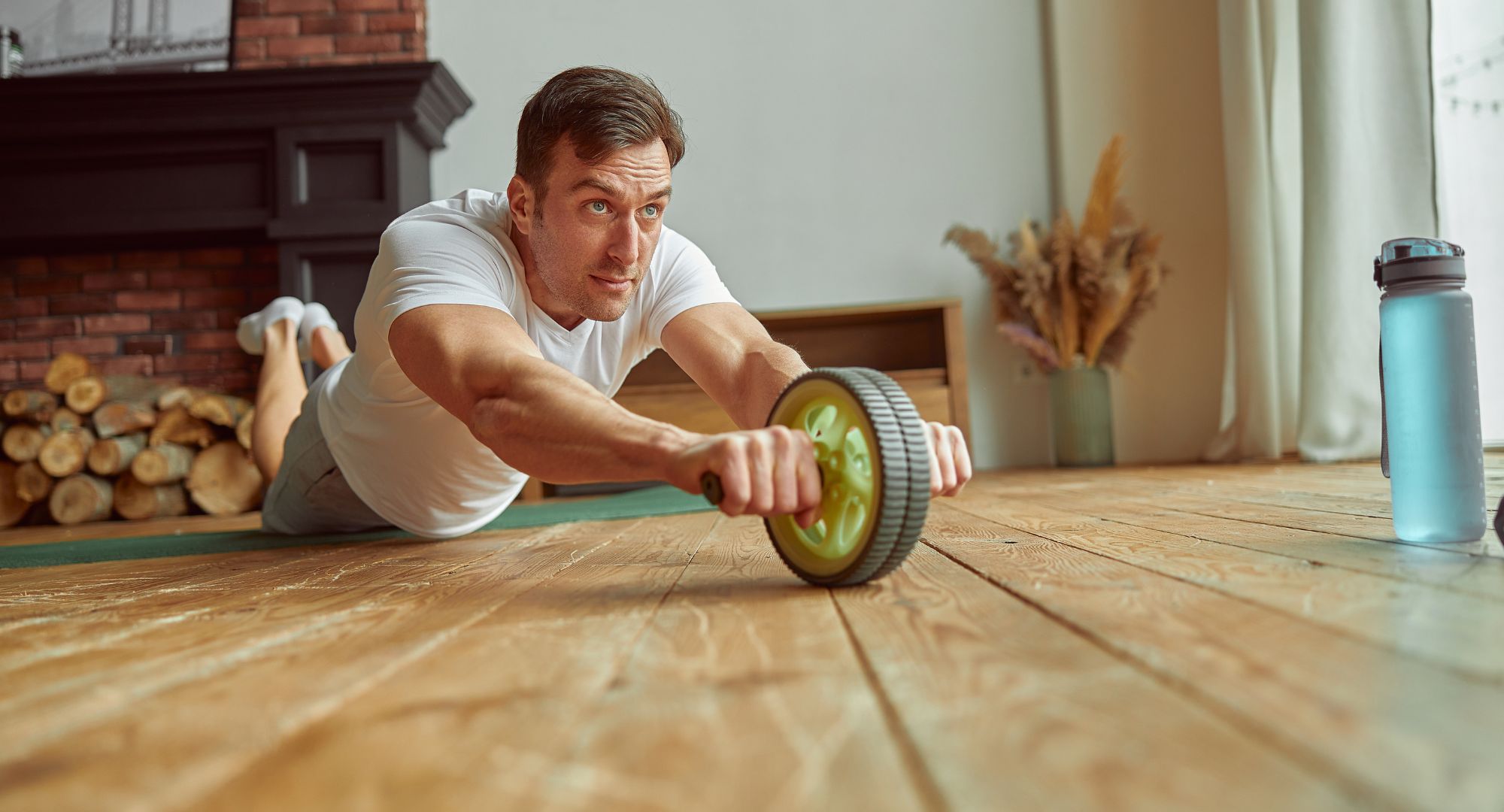
We’re not going to sugarcoat it: sit-ups suck. They’re boring, repetitive, and leave your back aching. But a strong core is essential for overall strength and stability, from lifting to dominating the beer pong table.
Fortunately, there are alternative core exercises that are just as effective (if not more so) than sit-ups, according to Tim Landicho, a certified CSCS and PN1 trainer focusing on functional training, athletic development, and sustainable weight loss coaching at Tonal. And unlike sit-ups, they don’t involve awkwardly crunching your body into a pretzel.
“Traditional sit-ups only target the rectus abdominus or the bulging muscles that create your ‘six pack,'” says Landicho. “A solid midsection requires core exercises to target the muscles surrounding those six-pack muscles: the transverse abdominus, internal and external obliques, erector spinae, the diaphragm, and pelvic floor.”
With that in mind, here are five effective core workouts that offer a more holistic approach to strengthening your core without putting strain on your back or resorting to sit-ups:

Superhero Iso Hold
The Superhero Iso Hold is a bodyweight exercise that targets several core muscle groups, including the transverse abdominis, obliques, and erector spinae. It’s ideal for anyone with a desk job or sits for long periods throughout the day.
“So many of us spend hours each day bent over phones and laptops,” says Landicho. “This exercise counters that position, restoring balance to the body by strengthening the erector spinae and glute muscles of the posterior chain.”
How to do the Superhero Iso Hold:
- Start lying face down on the floor.
- Stretch your arms above your head at a slight diagonal (about 45 degrees).
- Extend your legs hip-width apart.
- Imagine invisible strings lifting all four limbs off the ground. As you lift, squeeze your back muscles and glutes together.
- Hold this position for 30 seconds, balancing your weight on your pelvis and lower belly.
- Repeat this exercise two to three times.

Lateral Bridge with Rotation
The Lateral Bridge with Rotation, also known as a Side Bridge, is a great exercise for beginners to strengthen their obliques and improve core stability. It also helps to improve balance and coordination.
How to do the Lateral Bridge with Rotation:
- Start on your left side, place your elbow directly under your shoulder, and stack your feet on top of each other.
- Lift your hips off the floor so your body forms a straight line from your hips to your feet.
- Reach your right arm underneath your torso.
- Twist your torso as if you’re trying to grab something on the floor behind you.
- Hold this position for 10-15 seconds.
- Return to the starting position and repeat on the other side. Aim for two to three sets of eight to 10 repetitions on each side.

Bird Dog
The Bird Dog exercise is a simple yet effective way to strengthen your core, improve balance and coordination, and alleviate lower back pain. It targets multiple muscle groups, including the transverse abdominis, erector spinae, and glutes.
How to do the Bird Dog:
- Start on your hands and knees. Position your wrists under your shoulders and your knees under your hips. Tuck your toes.
- Extend one arm and leg simultaneously. Reach your arm straight out in front of you with your thumb toward the ceiling while simultaneously extending the opposite leg behind you.
- Engage your core. Keep your core engaged and your hips level throughout the entire movement.
- Lower your arm and leg. Return to the starting position and repeat on the other side.
- Complete two to three sets of eight to 10 repetitions on each side.

Goblet Squat
The Goblet Squat is a compound exercise that works your lower body, core, and upper back muscles.
“Goblet squats are great because you have to really engage your core and upper back and work hard to resist the weight pulling you forward into spinal flexion,” says Landicho.
How to do the Goblet Squat:
- Start with your feet shoulder-width apart and your toes slightly turned out. Engage your core and stand tall with a straight back.
- Imagine you’re sitting in a chair. Push your hips back and down while keeping your back straight and core engaged. As you descend, bend your knees until your thighs are roughly parallel to the floor.
- Once you reach the bottom, push through your heels and engage your glutes to stand back up to the starting position. Keep your core engaged throughout the entire movement.
- Repeat for two to three sets of eight to 10 repetitions.

Suitcase Deadlift
This exercise might sound intimidating, but the Suitcase Deadlift is a powerful way to strengthen your core, legs, and grip.
“This exercise especially targets the obliques and is very transferable to everyday activities because we all carry heavy things in one hand,” says Landicho.
How to do the Suitcase Deadlift:
- Start with your feet shoulder-width apart and toes slightly pointed outwards. Maintain your core engagement, chest held high, and back tight.
- Lower your body until your thighs are roughly parallel to the floor. Resist any tendency for your torso to bend to the side.
- Push through your heels to stand tall, keeping your arms straight at your sides.
- Once at the top, maintain a tall posture and pull your hips back to return to the partial squat position.
- Do two to three sets of eight to 10 repetitions, focusing on resisting any side bend and maintaining proper form throughout the movement.



